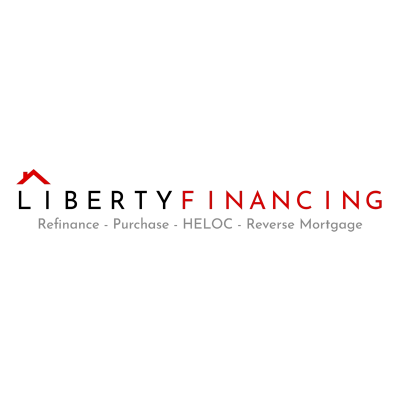How to Handle Unhappy Clients and Resolve Issues Effectively
Navigating the choppy waters of customer dissatisfaction can seem daunting, but with the right strategies, it's possible to turn challenging situations into triumphs. This article distills wisdom from seasoned professionals to offer practical steps for addressing and resolving client issues effectively. Discover how to transform complaints into opportunities for growth and strengthen client relationships in the process.
- Listen Actively to Address Client Concerns
- Schedule Face-to-Face Meetings for Resolution
- Understand Root Causes Through Open Communication
- Realign Expectations Through Direct Conversations
- Create Tailored Solutions for Client Satisfaction
- Turn Mistakes into Opportunities for Loyalty
- Offer Immediate Solutions with Personal Touch
- Provide Space for Clients to Express Frustrations
- Customize Offerings to Match Client Needs
- Collaborate with Customers to Find Solutions
- Treat Complaints as Opportunities for Improvement
- Empower Clients Through Attentive Listening
Listen Actively to Address Client Concerns
When a client is unhappy with our services at Nerdigital.com, my first step is to listen—truly listen—before reacting. Often, frustration comes from feeling unheard rather than just the issue itself.
One practice that has worked well for us is our "3R Approach"—Recognize, Resolve, Rebuild.
Recognize the issue - I make sure we acknowledge their concerns upfront without getting defensive. A simple "I understand why you're frustrated, and I appreciate you bringing this to our attention" can go a long way.
Resolve quickly and effectively - Once we understand the root of the problem, we take action. If we made a mistake, we own it. If expectations weren't aligned, we clarify and find a middle ground.
Rebuild trust - After resolving the issue, we go the extra mile—whether it's a follow-up call, additional support, or a goodwill discount—to reinforce that we genuinely care about their experience.
One time, a client felt our SaaS platform wasn't delivering the promised ROI. Instead of arguing, we analyzed their usage data, identified inefficiencies, and provided a tailored strategy to maximize their results. Not only did they stay, but they later became one of our strongest advocates.
At the end of the day, handling unhappy clients isn't about being perfect—it's about how you recover.

Schedule Face-to-Face Meetings for Resolution
When a client is unhappy, it is an opportunity to strengthen the relationship, not just fix a problem. At Marquet Media, I always start by listening—really listening—without getting defensive. I want to understand where the disconnect is: Was it a misaligned expectation, a delivery issue, or something deeper in communication?
One step I always take is to schedule a quick, face-to-face Zoom or voice call rather than handling it through email. That personal connection helps diffuse tension and shows the client I genuinely care. From there, I offer a fair but proactive solution—whether it's refining the deliverable, offering a bonus service, or adjusting the scope. Clients remember how you made them feel more than anything, and resolving conflict with empathy and clarity has turned some of our toughest moments into our strongest referrals.

Understand Root Causes Through Open Communication
When a client is unhappy with our services, the first thing I do is listen carefully to their concerns without interrupting. Letting them fully explain the issue not only helps me understand the root of the problem but also shows them that their frustration is being acknowledged. Many times, people just want to feel heard before a resolution can take place.
Once I have a clear picture of the issue, I focus on finding a solution that aligns with both their needs and what's realistically possible. If a mistake is made on our end, I take responsibility and work quickly to correct it. If the issue is based on expectations not being met, I clarify any misunderstandings and offer alternatives when possible. Keeping communication open, professional, and solution-focused has helped me turn many unhappy clients into long-term customers.

Realign Expectations Through Direct Conversations
When a client is unhappy, it's often less about the service itself and more about misaligned expectations. That's why my first step is always to have a direct conversation--not over email, but an actual phone or video call. I want to understand where the disconnect happened.
I start by asking open-ended questions like, "What were you expecting?" or "How did the outcome differ from what you envisioned?" More often than not, the issue stems from assumptions--either on their side or ours--that weren't fully communicated upfront. Maybe they expected a faster turnaround, a different level of involvement, or an outcome that wasn't realistic given the scope.
Once I know where things went off track, I focus on realigning. That could mean walking through our process again, adjusting future deliverables, or simply improving how we set expectations from the start. The goal isn't just to fix this one situation--it's to make sure we don't run into the same issue again. The best client relationships are built on clarity, and a tough conversation today can lead to a stronger partnership tomorrow.

Create Tailored Solutions for Client Satisfaction
At Property Accounting Co, we immediately schedule a one-on-one video call when a client expresses dissatisfaction, as direct conversation reveals underlying issues that emails might miss. Recently, a property manager was frustrated about report formatting in AppFolio not matching their expectations. By screen sharing and walking through their specific needs, we discovered they actually needed custom reporting that their package didn't include. We created a tailored solution that addressed their unique portfolio structure while staying within their budget. This transparent approach turns potential problems into opportunities to demonstrate our commitment to their success in property management accounting.
Turn Mistakes into Opportunities for Loyalty
Dealing with frustrated customers is challenging, but it's also an opportunity to demonstrate the kind of support that builds loyalty. There is one experience that stands out involving a customer who received the wrong product during a busy holiday season.
The first step was listening. I ensured the customer had a chance to explain their frustration fully without interruption. Once I understood the issue, I apologized sincerely, avoiding canned responses and offering a genuine acknowledgment of their inconvenience. I also reassured them that we'd rectify the situation promptly.
Next, I offered an immediate solution. We shipped the correct product overnight at no additional cost and allowed them to keep the incorrect item as a gesture of goodwill. I followed up with a personalized email, not only confirming the replacement order but also thanking them for their patience and understanding.
What turned the situation around was the personal touch. A week later, I checked in to ensure they were satisfied with the resolution. They appreciated the follow-up so much that they left a positive review about how well we handled the mistake. Over time, they became one of our most loyal customers, returning for multiple purchases and even referring friends.

Offer Immediate Solutions with Personal Touch
When a client expresses dissatisfaction with a service or product, the first step is to listen actively and empathetically to their concerns. Understanding their specific issues helps tailor a more effective solution and demonstrates to the client that their feedback is valued. For instance, if a client is unhappy with a product, asking detailed questions about their experience can reveal key aspects that may need improvement.
After gathering the information, it's crucial to acknowledge the client's feelings and apologize for any frustration caused. An honest apology can go a long way in maintaining trust. Next, presenting potential solutions or alternatives reassures the client that you are committed to resolving the issue. For example, if a customer received a faulty product, offering a replacement or a refund might be the optimal solution. Finally, ensure to follow up with the client to confirm that the resolution was satisfactory and ask for any further feedback. This not only potentially rectifies the immediate problem but also helps prevent similar issues in the future.

Provide Space for Clients to Express Frustrations
When a client is unhappy, I start by listening—fully, patiently, and without interruption. Last year, a client was frustrated about technical issues during their virtual conference. Rather than jump in with excuses or fixes, I invited them to coffee and let them talk. No defenses. Just space to vent.
That moment of being heard shifted everything. Once they felt acknowledged, they were open to hearing options. I offered three possible remedies and let them choose the path forward. In the end, they weren't just satisfied—they became our biggest referral source. The glitch didn't define their experience. How we handled it did.

Customize Offerings to Match Client Needs
When a client is unhappy, I first listen closely to understand their concerns. I then work quickly to find a solution, such as adjusting the organization to better fit their needs. For example, one client wasn't satisfied with their kitchen setup, so I offered to tweak it to match their daily routine. This approach shows clients that I care about their experience and helps turn any frustration into a stronger, more trusting relationship.

Collaborate with Customers to Find Solutions
Throughout my career in marketing, I've found that genuine empathy goes a long way in resolving customer complaints. Listen attentively, acknowledge their frustration, and apologize sincerely, even if the situation wasn't directly your fault. This shows the customer you value them and their concerns.
Next, collaborate with the customer to find a solution that works for both parties. Ask open-ended questions to understand their desired outcome and offer options that demonstrate your commitment to their satisfaction. Be transparent and realistic about what you can achieve, and follow through on your promises.
When you approach complaints with empathy and a collaborative spirit, you can turn a negative experience into a positive one, fostering trust and loyalty in the long run.

Treat Complaints as Opportunities for Improvement
Unhappy customers test your brand's credibility. I treat complaints as opportunities. A dissatisfied customer is still engaged. Ignoring them guarantees they will walk away. Addressing concerns with urgency and transparency often turns them into loyal advocates.
Listening is the priority. In our company, we don't assume we know the problem. A customer upset about pricing might be frustrated with the lack of explanation. A kiosk malfunction could be more about wasted time than the machine itself. Clarifying the real issue helps us provide the right solution.
Once we understand the concern, we act fast. A delayed response signals indifference. We train our support team to acknowledge complaints within hours and provide resolutions quickly. If pricing is the issue, we explain our automated pricing model. If a device is stuck in a kiosk, we ensure retrieval happens quickly. If we make an error, we own it. Transparency builds trust.
Long-term, we analyze complaints for patterns. If we see recurring issues, we adjust our processes. Are customers confused about pricing? We improve messaging. Are certain kiosks failing more often? We address technical reliability. Resolving specific problems is only one aspect of customer service; another is avoiding recurrence.
Effort is what customers demand, not perfection. Loyalty is earned by a brand that pays attention, reacts, and makes improvements. A brand that ignores complaints loses relevance.
Empower Clients Through Attentive Listening
When a client is unhappy with our services or products, the first thing we do is listen to the client's concerns and preferences. Without interruptions, we actively listen to their issues and needs and provide ample space for their feelings and frustrations, making them comfortable to express the exact challenge.
Listening not only involves casual hearing but also provides them with deep attention. We commonly use phrases like "I understand how you feel" to acknowledge their feelings. This behavior helps the clients feel valued, respected, and well-heard, especially when they are struggling with serious issues.
After gathering enough information through listening, we ask open-ended questions to clarify their needs. We address them with statements like "What can we do to make this right?" to empower the client and value their input in the resolution. Depending on the problem and scenario, we propose relevant solutions to resolve the entire matter with complete customer satisfaction.




